Kristine Hughes's Blog, page 166
December 16, 2010
Happy Birthday Jane Austen!
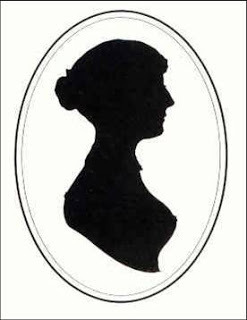 Jane Austen December 16, 1775-June 18, 1817
Jane Austen December 16, 1775-June 18, 1817My dearest Jane,
Here I am in the snowy midwest of the United States (that country born just after you), 235 years after your birth, expressing my thanks to you for all your talents and achievements. I can only hope that somehow you are aware of the esteem in which you are held by millions of people. Are you surprised that your novels are still adored 200 years after their publication? And that you are celebrated as one of English Literature's most famous authors?
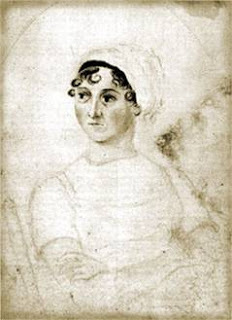 Jane Austen, sketch by sister CassandraHow do you account for the fact that many of us call ourselves Janeites? That we gather yearly in several countries to discuss your work, from the earliest of juvenilia to the final letters, prayers and poems you wrote just before your demise? That we scour your words, the accounts of relatives and friends, the objects you touched, your travels, your acquaintances, and every scrap we can uncover that might relate to your life? That universities devote entire courses of you? And that your work has provided the backbone for a whole industry of films, television series, sequels, continuations, contemporary interpretations, and scholarly treatises?
Jane Austen, sketch by sister CassandraHow do you account for the fact that many of us call ourselves Janeites? That we gather yearly in several countries to discuss your work, from the earliest of juvenilia to the final letters, prayers and poems you wrote just before your demise? That we scour your words, the accounts of relatives and friends, the objects you touched, your travels, your acquaintances, and every scrap we can uncover that might relate to your life? That universities devote entire courses of you? And that your work has provided the backbone for a whole industry of films, television series, sequels, continuations, contemporary interpretations, and scholarly treatises?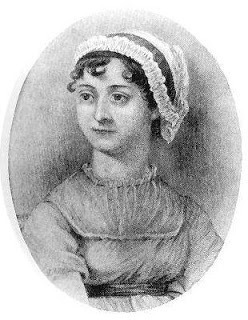 Jane Austen, as revised 1871I wonder how you would like to visit Chawton Cottage and see how it has become a shrine to you and your books? Or Chawton House, where the mansion has been restored to its late 18th century appearance and is now a library of women's writings before 1900? I would not recommend that you travel the streets of London to see the blue plaques on the buildings where you stayed with Henry -- it's far too dangerous unless you have a blue badge guide and skillful driver. Of a car, not a chaise.
Jane Austen, as revised 1871I wonder how you would like to visit Chawton Cottage and see how it has become a shrine to you and your books? Or Chawton House, where the mansion has been restored to its late 18th century appearance and is now a library of women's writings before 1900? I would not recommend that you travel the streets of London to see the blue plaques on the buildings where you stayed with Henry -- it's far too dangerous unless you have a blue badge guide and skillful driver. Of a car, not a chaise.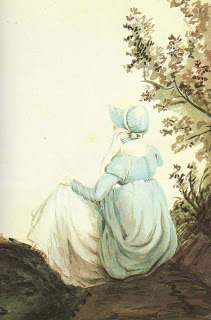 Would you believe that among the most popular reasons that people visit Stoneleigh Abbey, Netley Abbey, The Vyne or the Wheatsheaf Inn is that you were there? Or that one of the highlights of my life was to eat an apple in the garden of Chawton House when the gardener told me it was from a tree which you probably knew and from which you sampled the fruit. I wasn't alone either.
Would you believe that among the most popular reasons that people visit Stoneleigh Abbey, Netley Abbey, The Vyne or the Wheatsheaf Inn is that you were there? Or that one of the highlights of my life was to eat an apple in the garden of Chawton House when the gardener told me it was from a tree which you probably knew and from which you sampled the fruit. I wasn't alone either. And were you lingering high in the lofts of Winchester Cathedral when JASNA held a service dedicated to your memory, and that was only one of many so held in that great place? I hope you died in the knowledge that your family loved you and that someday you would be commemorated worldwide.
 Perhaps some of us have overdone things a bit and owe you an apology. Zombies, vampires, sea monsters, as well as highly fantasized so-called bio-pics have played fast and loose with the facts of your stories and your life. But through it all, we know, if we love Jane Austen (and we do!), all we have to do is pick up a copy of one of your books and immerse ourselves once more.
Perhaps some of us have overdone things a bit and owe you an apology. Zombies, vampires, sea monsters, as well as highly fantasized so-called bio-pics have played fast and loose with the facts of your stories and your life. But through it all, we know, if we love Jane Austen (and we do!), all we have to do is pick up a copy of one of your books and immerse ourselves once more.Most of all, I want to express my gratitude for the brilliant way you have enriched my life and that of many of my friends. You are one of a kind, Jane Austen, and we are so lucky to have "known" you. Thank you, Jane.
 I'm counting on your presence next fall when we celebrate 200 years of Sense and Sensibility in Ft. Worth, TX, October 14-16, 2011
I'm counting on your presence next fall when we celebrate 200 years of Sense and Sensibility in Ft. Worth, TX, October 14-16, 2011
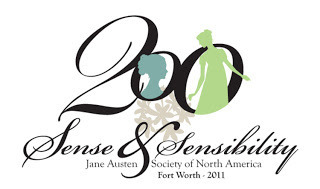
Yrs very affecly,V. Hinshaw
Published on December 16, 2010 02:00
December 15, 2010
Jane Austen's 235th Birthday in Wisconsin
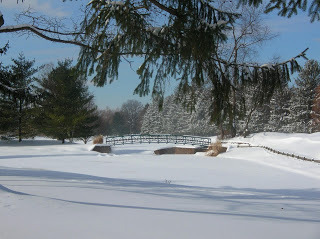 JASNA-WI celebrated Jane Austen's 235th Birthday on Saturday, December 11, 2010. We had a wonderful time at the North Hills Country Club where we looked over the avenues of trees along the snowy golf course, which looked for all the world like a wintry English landscape garden, Capability Brown-style.
JASNA-WI celebrated Jane Austen's 235th Birthday on Saturday, December 11, 2010. We had a wonderful time at the North Hills Country Club where we looked over the avenues of trees along the snowy golf course, which looked for all the world like a wintry English landscape garden, Capability Brown-style.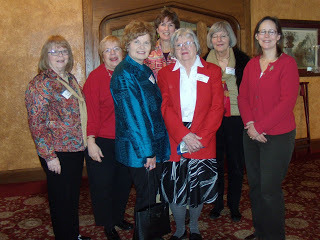 l-r Judy Beine, Victoria, Diana Burns, Liz Cooper,
l-r Judy Beine, Victoria, Diana Burns, Liz Cooper, Kathy O'Brien, Coral Bishop, Kim WilsonWe ate the lovely individual Beef Wellingtons and oh-so-English Trifle courtesy of our members Susan Flaherty and her father -- many thanks for your continuing generosity. Right, members of the JASNA-WI executive committee.
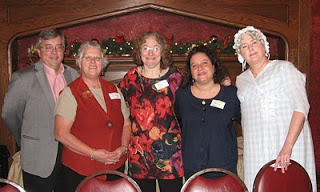 Among the many wonderful things for sale at the luncheon were the offerings of Austen Authors,l-r, Jack Caldwell, Kathryn Nelson, Abigail Reynolds, Marilyn Brant, and C. Allyn Pierson, all of whom have written sequels and/or continuations of Austen novels. More about them here.
Among the many wonderful things for sale at the luncheon were the offerings of Austen Authors,l-r, Jack Caldwell, Kathryn Nelson, Abigail Reynolds, Marilyn Brant, and C. Allyn Pierson, all of whom have written sequels and/or continuations of Austen novels. More about them here.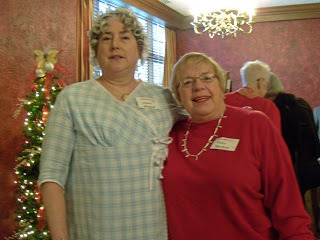 Here C. Allyn and Victoria pose in front of one of the many christmas trees -- and over V's shoulder is our pal, Pat Latkin of Chicago, who brought along some of her collection of JA books for sale. She always tempts us beyond belief with the rare finds she uncovers.
Here C. Allyn and Victoria pose in front of one of the many christmas trees -- and over V's shoulder is our pal, Pat Latkin of Chicago, who brought along some of her collection of JA books for sale. She always tempts us beyond belief with the rare finds she uncovers.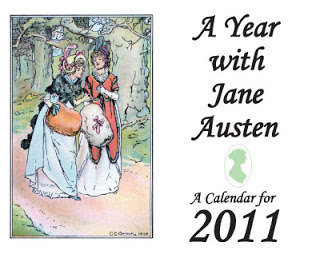 Also available was our wonderful Jane Austen Calendar, put together by Liz Philosophos Cooper and Kim Wilson, adorned for 2011 with Brock color illustrations, honoring the 200th anniversary of the publishing of Sense and Sensibility.
Also available was our wonderful Jane Austen Calendar, put together by Liz Philosophos Cooper and Kim Wilson, adorned for 2011 with Brock color illustrations, honoring the 200th anniversary of the publishing of Sense and Sensibility. 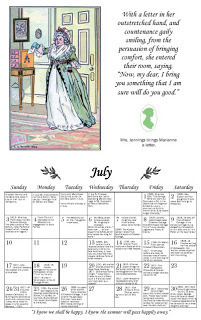 This shows a page, with almost every day filled in with an event in Jane austen's life or an incident in her writings. It is great fun for all the JA fans on your Christmas list. To order, contact http://www.jasnawi.org/Presenters of the annual Joan Philosophos Lecture were Victoria and Kim Wilson. We presented our colorful power point talk on "About Those Abbeys...in Fact, Fiction and Landscape" first heard at the recent AGM in Portland, OR. For details, see our blog post of Sunday, November 21, 2010, for a brief summary. Below, a rather blurry view...sorry, but I am certain JA won't mind. We can all recognize her picture behind us!
This shows a page, with almost every day filled in with an event in Jane austen's life or an incident in her writings. It is great fun for all the JA fans on your Christmas list. To order, contact http://www.jasnawi.org/Presenters of the annual Joan Philosophos Lecture were Victoria and Kim Wilson. We presented our colorful power point talk on "About Those Abbeys...in Fact, Fiction and Landscape" first heard at the recent AGM in Portland, OR. For details, see our blog post of Sunday, November 21, 2010, for a brief summary. Below, a rather blurry view...sorry, but I am certain JA won't mind. We can all recognize her picture behind us!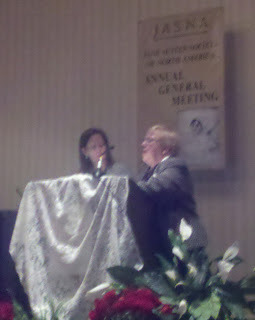
Published on December 15, 2010 02:30
December 14, 2010
Washington Irving's English Christmas

Washington Irving (1783-1859) was born in Manhattan, NYC, and traveled in Europe as a young man and later for business. He was one of the first genuine American literary geniuses, famous for many stories and essays, especially The Legend of Sleepy Hollow and Rip Van Winkle.
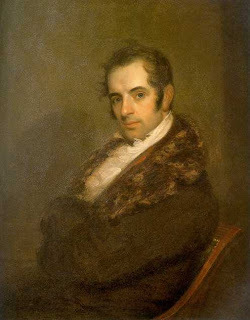 During his travels in England he wrote about Christmas celebrations in the countryside. Below are a few excepts...for the entire text click here. This is a long account, so I have eliminated large parts, which may be of interest to you, but in the spirit of the season, here is a taste...
During his travels in England he wrote about Christmas celebrations in the countryside. Below are a few excepts...for the entire text click here. This is a long account, so I have eliminated large parts, which may be of interest to you, but in the spirit of the season, here is a taste...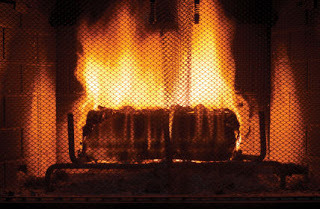 Christmas in England
Christmas in England"…Of all the old festivals that of Christmas awakens the strongest and most heartfelt associations. There is a tone of solemn and sacred feeling that blends with our conviviality, and lifts the spirit to a state of hallowed and elevated enjoyment. The services of the church about this season are extremely tender and inspiring. They dwell on the beautiful story of the origin of our faith, and the pastoral scenes that accompanied its announcement. They gradually increase in fervour and pathos during the season of Advent, until they break forth in full jubilee on the morning that brought peace and good-will to men. I do not know a grander effect of music on the moral feelings than to hear the full choir and the pealing organ performing a Christmas anthem in a cathedral, and filling every part of the vast pile with triumphant harmony.
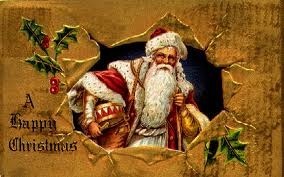 It is a beautiful arrangement, also derived from days of yore, that this festival, which commemorates the announcement of the religion of peace and love, has been made the season for gathering together of family connections, and drawing closer again those bands of kindred hearts which the cares and pleasures and sorrows of the world are continually operating to cast loose; of calling back the children of a family who have launched forth in life, and wandered widely asunder, once more to assemble about the paternal hearth, that rallying-place of the affections, there to grow young and loving again among the endearing mementoes of childhood. …
It is a beautiful arrangement, also derived from days of yore, that this festival, which commemorates the announcement of the religion of peace and love, has been made the season for gathering together of family connections, and drawing closer again those bands of kindred hearts which the cares and pleasures and sorrows of the world are continually operating to cast loose; of calling back the children of a family who have launched forth in life, and wandered widely asunder, once more to assemble about the paternal hearth, that rallying-place of the affections, there to grow young and loving again among the endearing mementoes of childhood. …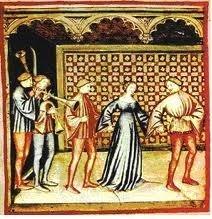 The English, from the great prevalence of rural habits throughout every class of society, have always been fond of those festivals and holidays which agreeably interrupt the stillness of country life; and they were, in former days, particularly observant of the religious and social rites of Christmas. It is inspiring to read even the dry details which some antiquarians have given of the quaint humours, the burlesque pageants, the complete abandonment to mirth and good-fellowship with which this festival was celebrated. It seemed to throw open every door, and unlock every heart. It brought the peasant and the peer together, and blended all ranks in one warm generous flow of joy and kindness. The old halls of castles and manor-houses resounded with the harp and the Christmas carol, and their ample boards groaned under the weight of hospitality. Even the poorest cottage welcomed the festive season with green decorations of bay and holly--the cheerful fire glanced its rays through the lattice, inviting the passenger to raise the latch, and join the gossip knot huddled around the hearth, beguiling the long evening with legendary jokes and oft-told Christmas tales.
The English, from the great prevalence of rural habits throughout every class of society, have always been fond of those festivals and holidays which agreeably interrupt the stillness of country life; and they were, in former days, particularly observant of the religious and social rites of Christmas. It is inspiring to read even the dry details which some antiquarians have given of the quaint humours, the burlesque pageants, the complete abandonment to mirth and good-fellowship with which this festival was celebrated. It seemed to throw open every door, and unlock every heart. It brought the peasant and the peer together, and blended all ranks in one warm generous flow of joy and kindness. The old halls of castles and manor-houses resounded with the harp and the Christmas carol, and their ample boards groaned under the weight of hospitality. Even the poorest cottage welcomed the festive season with green decorations of bay and holly--the cheerful fire glanced its rays through the lattice, inviting the passenger to raise the latch, and join the gossip knot huddled around the hearth, beguiling the long evening with legendary jokes and oft-told Christmas tales. 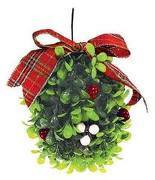 ... The traditionary customs of golden-hearted antiquity, its feudal hospitalities, and lordly wassailings, have passed away with the baronial castles and stately manor-houses in which they were celebrated. They comported with the shadowy hall, the great oaken gallery, and the tapestried parlour, but are unfitted to the light showy saloons and gay drawing-rooms of the modern villa.
... The traditionary customs of golden-hearted antiquity, its feudal hospitalities, and lordly wassailings, have passed away with the baronial castles and stately manor-houses in which they were celebrated. They comported with the shadowy hall, the great oaken gallery, and the tapestried parlour, but are unfitted to the light showy saloons and gay drawing-rooms of the modern villa. Shorn, however, as it is, of its ancient and festive honours, Christmas is still a period of delightful excitement in England. It is gratifying to see that home feeling completely aroused which seems to hold so powerful a place in every English bosom. The preparations making on every side for the social board that is again to unite friends and kindred; the presents of good cheer passing and repassing, those tokens of regard, and quickeners of kind feelings; the evergreens distributed about houses and churches, emblems of peace and gladness; all these have the most pleasing effect in producing fond associations, and kindling benevolent sympathies. Even the sound of the waits, rude as may be their minstrelsy, breaks upon the mid-watches of a winter night with the effect of perfect harmony. As I have been awakened by them in that still and solemn hour, "when deep sleep falleth upon man," I have listened with a hushed delight, and, connecting them with the sacred and joyous occasion, have almost fancied them into another celestial choir, announcing peace and good-will to mankind.
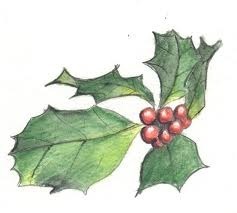 How delightfully the imagination, when wrought upon by these moral influences, turns everything to melody and beauty: The very crowing of the cock, who is sometimes heard in the profound repose of the country, "telling the night-watches to his feathery dames," was thought by the common people to announce the approach of this sacred festival:
How delightfully the imagination, when wrought upon by these moral influences, turns everything to melody and beauty: The very crowing of the cock, who is sometimes heard in the profound repose of the country, "telling the night-watches to his feathery dames," was thought by the common people to announce the approach of this sacred festival: "Some say that ever 'gainst that season comes
Wherein our Saviour's birth is celebrated,
This bird of dawning singeth all night long:
And then, they say, no spirit dares stir abroad;
The nights are wholesome--then no planets strike, no fairy takes, no witch hath power to charm, So hallow'd and so gracious is the time."
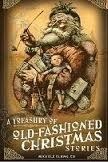 Amidst the general call to happiness, the bustle of the spirits, and stir of the affections, which prevail at this period, what bosom can remain insensible? It is, indeed, the season of regenerated feeling--the season for kindling, not merely the fire of hospitality in the hall, but the genial flame of charity in the heart...."
Amidst the general call to happiness, the bustle of the spirits, and stir of the affections, which prevail at this period, what bosom can remain insensible? It is, indeed, the season of regenerated feeling--the season for kindling, not merely the fire of hospitality in the hall, but the genial flame of charity in the heart...."Have a happy, old-fashioned holiday!!
Published on December 14, 2010 02:00
December 13, 2010
Walter Potter's Museum of Curiosities
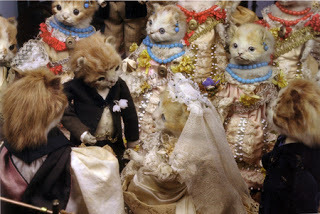 The Kitten's WeddingUntil his death in 1918, Walter Potter created numerous scenes from everyday domestic life – a cricket match, a tea and croquet party, a wedding, a schoolroom – using taxidermied guinea pigs, rabbits, kittens, squirrels, and other small birds and animals, all of which were on view at Potter's Museum in Bramber, West Sussex. While now-a-days Potter's use of animals would draw a hue and cry from activists, one cannot deny that the collection is a wonder and that it offers a view on Victorian ingenuity.
The Kitten's WeddingUntil his death in 1918, Walter Potter created numerous scenes from everyday domestic life – a cricket match, a tea and croquet party, a wedding, a schoolroom – using taxidermied guinea pigs, rabbits, kittens, squirrels, and other small birds and animals, all of which were on view at Potter's Museum in Bramber, West Sussex. While now-a-days Potter's use of animals would draw a hue and cry from activists, one cannot deny that the collection is a wonder and that it offers a view on Victorian ingenuity.
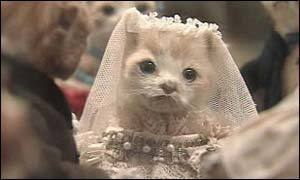 The BrideThe eccentric world of taxidermist Walter Potter, where stuffed animals mimic human life, occupied various homes after Potter's death, one of them being Jamaica Inn in Cornwall. However, the 10,000 item collection was broken up and sold for more than £500,000 in 2003. Many people were outraged that Potter's historic dioramas were not kept together, but the quirky display is being reassembled in an exhibition at the Museum of Everything in Primrose Hill, London co-curated by artist Sir Peter Blake.
The BrideThe eccentric world of taxidermist Walter Potter, where stuffed animals mimic human life, occupied various homes after Potter's death, one of them being Jamaica Inn in Cornwall. However, the 10,000 item collection was broken up and sold for more than £500,000 in 2003. Many people were outraged that Potter's historic dioramas were not kept together, but the quirky display is being reassembled in an exhibition at the Museum of Everything in Primrose Hill, London co-curated by artist Sir Peter Blake.
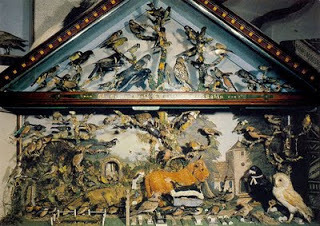 The Death and Burtial of Cock Robin
The Death and Burtial of Cock Robin
Walter Potter was born in a small English village called Bramber, near Steyning in West Sussex on the 2nd of July, 1835, his family ran a local public house in the village called The White Lion (now believed to be known as 'The Castle'). At the age of 15, Walter made his very first attempt at taxidermy when he preserved his own beloved pet canary. Walter told the story of how this led to bigger things for him to a correspondent from The Idler Magazine in 1895 -
"Well, after I'd done my canary, people encouraged me to persevere. If they saw any bird or animal they thought I would like, they'd bring or send it to me. At last I get the idea of putting a case of birds together to illustrate ' The History of Cock Robin.' It took me all my spare time for over six or seven years, and I used over a hundred specimens of British birds, including, though not actually necessary to the story, the cuckoo, nightingale, goldfinch, hawfinch, bramblefinch, and buntings. I also threw in a few butterflies. The bull himself was the most difficult of all. At last I bought a model, as it was impossible to get a real bull, however small, into the case. When I had bought my model it hadn't any hair or skin, so I got a calf-skin, cut the hair off, and stuck it on the model with glue. When I had finished my ' Cock Robin ' cage I was living at the Castle Hotel here, and exhibited it in the garden bower. All the young ladies from the school here came to see it, and one of them took her hat off and collected a few shillings from her companions. From that time I gradually began to keep a collection. I never thought, when I started, to make a Museum, but the thing gradually grew of itself. Soon I began to want more room. My father had a new tea-shed put up in the garden, and so I used that as a show-room.
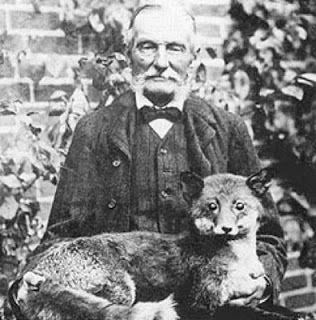 Walter Potter and a Friend
Walter Potter and a Friend
Soon Walter needed to move his experiments of preservation, to the stables loft as his interest and hobby grew. As legend has it, he was inspired by his sister, Jane Potter, who showed him the illustrations in her nursery rhyme book, he took particular interest in the well known rhyme, 'The death and burial of cock Robin.' Potter was thus prompted to produce his most famed diorama, which included 98 species of British birds housed in a large glass case.
The tableaux went on display in a summer house in 1861 behind his parents inn and was a huge success with received commissions to create taxidermy animals for wealthy Victorians. Before long, Walter discovered he could make a living via taxidermy and at the same time fund his passion for his more creative dioramas/tableaux, for which he was to become famous.
After several moves of premises, likely to have all been in Bramber, in 1880 Walter secured a specially constructed building, which soon had to be extended to include other unusual exhibits from the animal kingdom, such as the four legged chicken and the two headed lamb.
Walter married a local girl called Ann Stringer Muzzell and went on to have three children, Walter, Annie and Minnie all thrived as the museum grew in both size and popularity, coming to be known as 'Mr. Potters Museum Of Curiosities' and hailed as a 'World Famous example Of Victorian Whimsy.' At the peak of its popularity, special coach trips were laid on from Brighton and the Museum drew such large crowds to the village that an extension had to be built on to the platform at Bramber railway station.
Walter suffered a stroke in 1914 and never to fully recovered, dying in 1918 at the age of 83. He was buried in Bramber churchyard, in the little villiage in west Sussex that he had scarcely left. By this time the museum contained about 10,000 specimens.
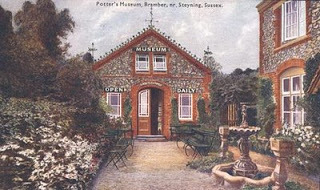 Potter's Museum, Bramber, Sussex
Potter's Museum, Bramber, Sussex
The museum closed in the 1970s, and, after having been moved to Brighton and then to Arundel, was sold in 1984 to the owners of Jamaica Inn, Cornwall, where it attracted more than 30,000 visitors each year. The death of their taxidermist and economic considerations led to the collection being auctioned by Bonhams in 2003, when a total of £500,000 was raised. Present at the auction were Peter Blake, Harry Hill and David Bailey. A bid of GBP£1m offered by Damien Hirst for the entire collection had apparently been rejected by the auctioneers, and the owners sued Bonhams, arguing that this offer should have been accepted.
Potter's taxidermy collection was broken up and taken to the four corners of the world by their new owners. However, right now the collection has once again been reassembled and will be exhibited at the Museum of Everything until the end of December. The iconic pieces, "The Kitten's Wedding", "The Kittens' Tea Party" and "The Death and Burial of Cock Robin" will also be on display. James Brett, the Museum of Everything\'s founder said : "Potter was . . . a true original and himself an outsider artist as much as a craftsman. I can tell a Potter from the work of another taxidermist at a glance across a room - he was a genius".
Other loans for the exhibition come from the comedian Harry Hill, the photographer David Bailey, other passionate private enthusiasts, and Pat Morris, a retired academic and expert on the history of taxidermy who intends to leave his own collection to a museum. "The Death of Cock Robin," which displays more than 100 birds including a weeping robin widow and an owl gravedigger who has tumbled some tiny bones out of the soil while preparing space for the dead robin. Phone calls were still coming in every day from Potter fanatics, according to Brett. The three-legged pig, the two-headed lamb and the four-winged chicken are already in place. He hopes the rabbits' school, and the guinea pigs playing cricket, a piece believed to be in France, may yet turn up.
 The Kitten's WeddingUntil his death in 1918, Walter Potter created numerous scenes from everyday domestic life – a cricket match, a tea and croquet party, a wedding, a schoolroom – using taxidermied guinea pigs, rabbits, kittens, squirrels, and other small birds and animals, all of which were on view at Potter's Museum in Bramber, West Sussex. While now-a-days Potter's use of animals would draw a hue and cry from activists, one cannot deny that the collection is a wonder and that it offers a view on Victorian ingenuity.
The Kitten's WeddingUntil his death in 1918, Walter Potter created numerous scenes from everyday domestic life – a cricket match, a tea and croquet party, a wedding, a schoolroom – using taxidermied guinea pigs, rabbits, kittens, squirrels, and other small birds and animals, all of which were on view at Potter's Museum in Bramber, West Sussex. While now-a-days Potter's use of animals would draw a hue and cry from activists, one cannot deny that the collection is a wonder and that it offers a view on Victorian ingenuity. The BrideThe eccentric world of taxidermist Walter Potter, where stuffed animals mimic human life, occupied various homes after Potter's death, one of them being Jamaica Inn in Cornwall. However, the 10,000 item collection was broken up and sold for more than £500,000 in 2003. Many people were outraged that Potter's historic dioramas were not kept together, but the quirky display is being reassembled in an exhibition at the Museum of Everything in Primrose Hill, London co-curated by artist Sir Peter Blake.
The BrideThe eccentric world of taxidermist Walter Potter, where stuffed animals mimic human life, occupied various homes after Potter's death, one of them being Jamaica Inn in Cornwall. However, the 10,000 item collection was broken up and sold for more than £500,000 in 2003. Many people were outraged that Potter's historic dioramas were not kept together, but the quirky display is being reassembled in an exhibition at the Museum of Everything in Primrose Hill, London co-curated by artist Sir Peter Blake. The Death and Burtial of Cock Robin
The Death and Burtial of Cock RobinWalter Potter was born in a small English village called Bramber, near Steyning in West Sussex on the 2nd of July, 1835, his family ran a local public house in the village called The White Lion (now believed to be known as 'The Castle'). At the age of 15, Walter made his very first attempt at taxidermy when he preserved his own beloved pet canary. Walter told the story of how this led to bigger things for him to a correspondent from The Idler Magazine in 1895 -
"Well, after I'd done my canary, people encouraged me to persevere. If they saw any bird or animal they thought I would like, they'd bring or send it to me. At last I get the idea of putting a case of birds together to illustrate ' The History of Cock Robin.' It took me all my spare time for over six or seven years, and I used over a hundred specimens of British birds, including, though not actually necessary to the story, the cuckoo, nightingale, goldfinch, hawfinch, bramblefinch, and buntings. I also threw in a few butterflies. The bull himself was the most difficult of all. At last I bought a model, as it was impossible to get a real bull, however small, into the case. When I had bought my model it hadn't any hair or skin, so I got a calf-skin, cut the hair off, and stuck it on the model with glue. When I had finished my ' Cock Robin ' cage I was living at the Castle Hotel here, and exhibited it in the garden bower. All the young ladies from the school here came to see it, and one of them took her hat off and collected a few shillings from her companions. From that time I gradually began to keep a collection. I never thought, when I started, to make a Museum, but the thing gradually grew of itself. Soon I began to want more room. My father had a new tea-shed put up in the garden, and so I used that as a show-room.
 Walter Potter and a Friend
Walter Potter and a FriendSoon Walter needed to move his experiments of preservation, to the stables loft as his interest and hobby grew. As legend has it, he was inspired by his sister, Jane Potter, who showed him the illustrations in her nursery rhyme book, he took particular interest in the well known rhyme, 'The death and burial of cock Robin.' Potter was thus prompted to produce his most famed diorama, which included 98 species of British birds housed in a large glass case.
The tableaux went on display in a summer house in 1861 behind his parents inn and was a huge success with received commissions to create taxidermy animals for wealthy Victorians. Before long, Walter discovered he could make a living via taxidermy and at the same time fund his passion for his more creative dioramas/tableaux, for which he was to become famous.
After several moves of premises, likely to have all been in Bramber, in 1880 Walter secured a specially constructed building, which soon had to be extended to include other unusual exhibits from the animal kingdom, such as the four legged chicken and the two headed lamb.
Walter married a local girl called Ann Stringer Muzzell and went on to have three children, Walter, Annie and Minnie all thrived as the museum grew in both size and popularity, coming to be known as 'Mr. Potters Museum Of Curiosities' and hailed as a 'World Famous example Of Victorian Whimsy.' At the peak of its popularity, special coach trips were laid on from Brighton and the Museum drew such large crowds to the village that an extension had to be built on to the platform at Bramber railway station.
Walter suffered a stroke in 1914 and never to fully recovered, dying in 1918 at the age of 83. He was buried in Bramber churchyard, in the little villiage in west Sussex that he had scarcely left. By this time the museum contained about 10,000 specimens.
 Potter's Museum, Bramber, Sussex
Potter's Museum, Bramber, SussexThe museum closed in the 1970s, and, after having been moved to Brighton and then to Arundel, was sold in 1984 to the owners of Jamaica Inn, Cornwall, where it attracted more than 30,000 visitors each year. The death of their taxidermist and economic considerations led to the collection being auctioned by Bonhams in 2003, when a total of £500,000 was raised. Present at the auction were Peter Blake, Harry Hill and David Bailey. A bid of GBP£1m offered by Damien Hirst for the entire collection had apparently been rejected by the auctioneers, and the owners sued Bonhams, arguing that this offer should have been accepted.
Potter's taxidermy collection was broken up and taken to the four corners of the world by their new owners. However, right now the collection has once again been reassembled and will be exhibited at the Museum of Everything until the end of December. The iconic pieces, "The Kitten's Wedding", "The Kittens' Tea Party" and "The Death and Burial of Cock Robin" will also be on display. James Brett, the Museum of Everything\'s founder said : "Potter was . . . a true original and himself an outsider artist as much as a craftsman. I can tell a Potter from the work of another taxidermist at a glance across a room - he was a genius".
Other loans for the exhibition come from the comedian Harry Hill, the photographer David Bailey, other passionate private enthusiasts, and Pat Morris, a retired academic and expert on the history of taxidermy who intends to leave his own collection to a museum. "The Death of Cock Robin," which displays more than 100 birds including a weeping robin widow and an owl gravedigger who has tumbled some tiny bones out of the soil while preparing space for the dead robin. Phone calls were still coming in every day from Potter fanatics, according to Brett. The three-legged pig, the two-headed lamb and the four-winged chicken are already in place. He hopes the rabbits' school, and the guinea pigs playing cricket, a piece believed to be in France, may yet turn up.
Published on December 13, 2010 01:28
December 12, 2010
The Spirit of Christmas Past is Alive and Well in England
Country house festivities that celebrate both Christmas and history are taking place throughout England this year. Whether you choose to spend Christmas in the 16th century or early 19th century, there's a venue that can provide the authentic feel of holidays past.
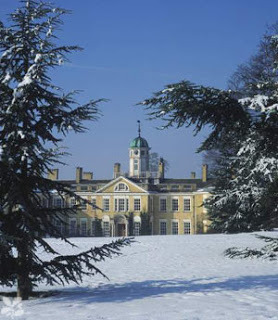
Polesden Lacey (above) in Surrey was once owned by Mrs. Ronald Greville DBE, who was the daughter of Scottish brewing magnate. The grounds boast a gorgeous, walled rose garden, while the house, once also owned by Richard Brinsley Sheridan, was the venue for the honeymoon of the future King George VI and Queen Elizabeth. Today, visitors can enjoy Mrs Greville's collections, displayed in the reception rooms and galleries as they were at the time of her celebrated house parties. Cecil Beaton called Mrs. Greville "a galumphing, greedy, snobbish old toad," though it was said that her servants were devoted to her.
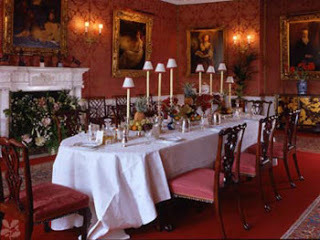 The dining room at Polesden Lacey
The dining room at Polesden Lacey
During the holidays, servants, guides and volunteers at Polesden Lacey will don period costumes created by members of the National Association of Decorative and Fine Arts and the halls of the house will be decked in Edwardian splendour. For Christmas opening times, click here.
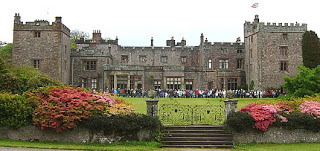
Located in the Lake District, 13th Century Muncaster Castle (above) has been owned by the same family for 800 years, with Peter Frost-Pennington it's current owner. He also gets into the Christmas mood by dressing up as a Victorian butler and taking groups of visitors round the Castle. According to Frost-Pennington, his character is a "grasping old butler who gives them behind-the-scenes-gossip." In addition to Victorian Christmas decor, the Castle offers a sound and light show each night, while the gardens come alive with music and special effects.
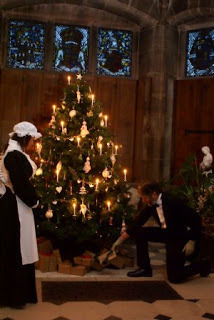 The tree at Muncaster CastleIf you'd like to extend a Christmas visit to a country house to a stay at a country house, you might consider booking in to Chilston Park, where I've stayed in the past and highly recommend. Located in Kent, Chilston Park is a unique Grade I listed property that has been a home to eminent politicians, writers, Lords and Viscounts.
The tree at Muncaster CastleIf you'd like to extend a Christmas visit to a country house to a stay at a country house, you might consider booking in to Chilston Park, where I've stayed in the past and highly recommend. Located in Kent, Chilston Park is a unique Grade I listed property that has been a home to eminent politicians, writers, Lords and Viscounts.
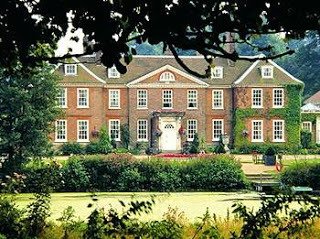
Carol singers and roaring fires will all be part of a Chilston Park Christmas, and mulled wine and mince pies will be served after Midnight Mass. Have breakfast served to you in bed whilst you open the presents delivered by Father Christmas through the previous night. In the afternoon, you can explore the acres of grounds and return in time to hear the Queen's speech.
Foodies should head to the Manor House Hotel near Bath. The 14th Century manor house will be awash in twinkling white lights and you'll be welcomed to the hotel with Afternoon Tea.
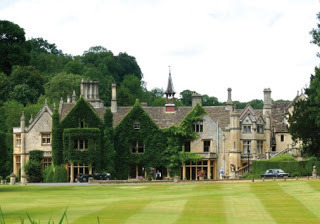
As part of the Barony of Combe, the Manor House was very much the heart of the breathtaking medieval village of Castle Combe. Today, the Hotel's Michelin starred chef will prepare meals throughout your stay and on Christmas night you can join in the fun of a Quiz Night. Boxing Day options will include archery, walks through the 35 acre grounds or a trip to Bath to see the Pantomime.
Step it up a notch and mix fine food with spa treatments at Christmas at Stapleford Park. Early historical records indicate that at the time of the Norman Survey, Stapleford was held under the King by Henry de Ferrers, who fought at the battle of Hastings in 1066, and who was afterwards appointed the Doomsday Commissioner.
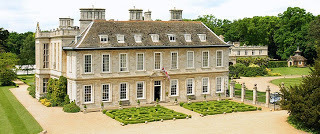
Today, guests can explore the 500 acres of grounds designed by Capability Brown, whilst inside, you'll partake of a gourmet Christmas dinner. A champagne reception before lunch next day, candlelit buffet dinner later that night and a Boxing Day dinner dance are all perfect excuses to book into the spa for a little Christmaas pampering. After all, opening gifts can be tres exhausting.

Polesden Lacey (above) in Surrey was once owned by Mrs. Ronald Greville DBE, who was the daughter of Scottish brewing magnate. The grounds boast a gorgeous, walled rose garden, while the house, once also owned by Richard Brinsley Sheridan, was the venue for the honeymoon of the future King George VI and Queen Elizabeth. Today, visitors can enjoy Mrs Greville's collections, displayed in the reception rooms and galleries as they were at the time of her celebrated house parties. Cecil Beaton called Mrs. Greville "a galumphing, greedy, snobbish old toad," though it was said that her servants were devoted to her.
 The dining room at Polesden Lacey
The dining room at Polesden LaceyDuring the holidays, servants, guides and volunteers at Polesden Lacey will don period costumes created by members of the National Association of Decorative and Fine Arts and the halls of the house will be decked in Edwardian splendour. For Christmas opening times, click here.

Located in the Lake District, 13th Century Muncaster Castle (above) has been owned by the same family for 800 years, with Peter Frost-Pennington it's current owner. He also gets into the Christmas mood by dressing up as a Victorian butler and taking groups of visitors round the Castle. According to Frost-Pennington, his character is a "grasping old butler who gives them behind-the-scenes-gossip." In addition to Victorian Christmas decor, the Castle offers a sound and light show each night, while the gardens come alive with music and special effects.
 The tree at Muncaster CastleIf you'd like to extend a Christmas visit to a country house to a stay at a country house, you might consider booking in to Chilston Park, where I've stayed in the past and highly recommend. Located in Kent, Chilston Park is a unique Grade I listed property that has been a home to eminent politicians, writers, Lords and Viscounts.
The tree at Muncaster CastleIf you'd like to extend a Christmas visit to a country house to a stay at a country house, you might consider booking in to Chilston Park, where I've stayed in the past and highly recommend. Located in Kent, Chilston Park is a unique Grade I listed property that has been a home to eminent politicians, writers, Lords and Viscounts. 
Carol singers and roaring fires will all be part of a Chilston Park Christmas, and mulled wine and mince pies will be served after Midnight Mass. Have breakfast served to you in bed whilst you open the presents delivered by Father Christmas through the previous night. In the afternoon, you can explore the acres of grounds and return in time to hear the Queen's speech.
Foodies should head to the Manor House Hotel near Bath. The 14th Century manor house will be awash in twinkling white lights and you'll be welcomed to the hotel with Afternoon Tea.

As part of the Barony of Combe, the Manor House was very much the heart of the breathtaking medieval village of Castle Combe. Today, the Hotel's Michelin starred chef will prepare meals throughout your stay and on Christmas night you can join in the fun of a Quiz Night. Boxing Day options will include archery, walks through the 35 acre grounds or a trip to Bath to see the Pantomime.
Step it up a notch and mix fine food with spa treatments at Christmas at Stapleford Park. Early historical records indicate that at the time of the Norman Survey, Stapleford was held under the King by Henry de Ferrers, who fought at the battle of Hastings in 1066, and who was afterwards appointed the Doomsday Commissioner.

Today, guests can explore the 500 acres of grounds designed by Capability Brown, whilst inside, you'll partake of a gourmet Christmas dinner. A champagne reception before lunch next day, candlelit buffet dinner later that night and a Boxing Day dinner dance are all perfect excuses to book into the spa for a little Christmaas pampering. After all, opening gifts can be tres exhausting.
Published on December 12, 2010 01:54
December 11, 2010
The Wellington Connection: Ice Skating in London
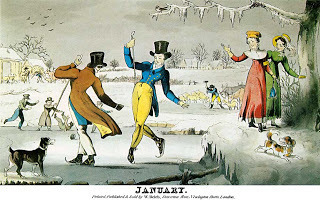
Active until the end, the Duke of Wellington was an advocate of exercise and fresh air. In a letter to Angela Burdett-Coutts, he sent the following encouragement:
"Don't repine! My Dear! that you are a Woman! There is nothing to prevent your skaiting; excepting the difficulty and want of opportunity now, possibly, of learning. But Women skait habitually in the Countries in which the Ice is certain annually, and in England I have seen Ladies skait beautifully. The best that I have seen, I think, is Lady Catherine Cavendish, and Her skaiting is admirable! But I have seen many who skait very well; as well at least as most Men . . . . "
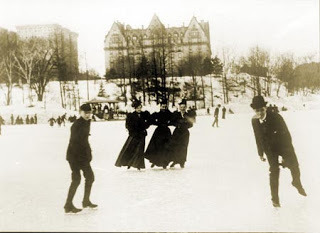
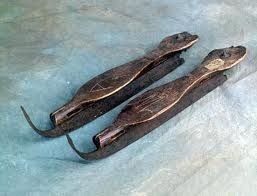
Ice skating became so popular in Scotland that the first skating club was established in Edinburgh in 1742. In 1848, E. W. Bushnell invented the first all-iron ice skate that could be clipped to a boot. During the 1800's, the popularity of ice skating skyrocketed. Skating clubs opened in London, Vienna and New York and rinks were built in Toronto, Canada and Davos, Switzerland. In 1876, the first artificially frozen ice rink, called the Glaciarium, was opened in London by John Gamgee and was mechanically refrigerated. Figure skating was first included as an event at the 1908 Summer Olympics in London.
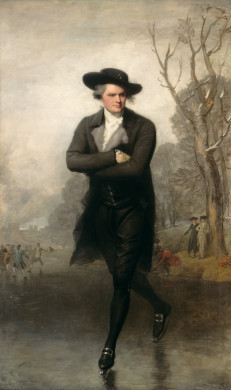
 Here are two fun pictures of ice skaters from our favorite era. On the right is "The Skating Minister" by Henry Raeburn, from the National Gallery of Scotland, painted in the 1790's. The full title is The Reverend Robert Walker Skating on Duddingston Loch.
Here are two fun pictures of ice skaters from our favorite era. On the right is "The Skating Minister" by Henry Raeburn, from the National Gallery of Scotland, painted in the 1790's. The full title is The Reverend Robert Walker Skating on Duddingston Loch.The second portrait, below, is by American Gilbert Stuart, painted in 1782, "The Skater," aka Portrait of William Grant, part of the Andrew W. Mellon Collection in the National Gallery of Art in Washington, D. C.
Should you wish to take up the Duke's advice, here are a few locations in London where you can practice your "skaiting."
Hyde Park Winter Wonderland - 19 November to 3 January - Each year, Hyde Park becomes home to Central London's largest open air ice skating rink. £30.00 per session. Ice guides are available to escort your party on the ice.Each Ice guide can look after up to 15 skaters and will be exclusive to your group for the 1 hour session.
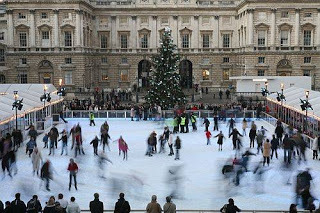
Somerset House - 5 November to 17 January - The 18th century courtyard provides a magical setting for the ice rink, graced by a 12 foot Xmas tree. A skating school is held on the Somerset House Ice Rink on weekdays from 8.30-9.30am for adults, and there's also Penguin Club, which teaches kids how to skate.
Natural History Museum - 5 November to 9 January - The Natural History Museum ice rink features a special viewing platform for spectators and visitors, providing a perfect place to enjoy a break from the ice. Visit the ice side Cafe Bar for food, drink and a chat with fellow skaters, before heading back to the ice for another quick spin or two. The Cafe Bar is always a popular addition to the ice skating, serving up mulled wine, hot chocolate and a great birdseye view of the ice rink itself.
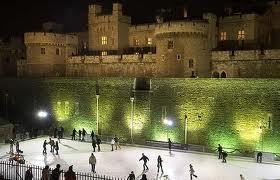
Tower of London - 20 November to 9 January - Located in the dry moat beneath the fortress, the real-ice rink offers the chance to skate in a truly unique setting on the banks of the River Thames. The Moat Cafe offers hot drinks to warm the cockles of skater's hearts.
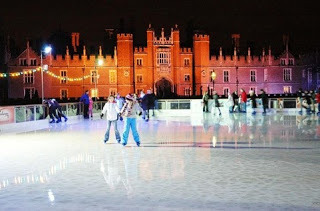
Hampton Court Palace - 27 November to 9 January - One of London's most dramatic ice rinks, the rink at Hampton Court Palace is set against the backdrop of Henry VIII's Tudor palace. The 900-square-metre rink which has room for 250 skaters. The adjacent café serves hot chocolate and snacks.
Published on December 11, 2010 00:29
December 10, 2010
A Gathering of Graces - Part Three
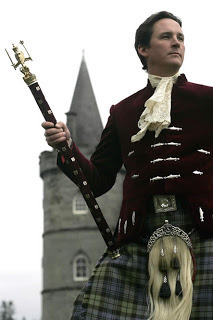
Torquhil Campbell, 13th Duke of Argyll - title created 1701. Additional titles: Marquess of Kintyre and Lorne, Viscount Lochow and Glenilla and Lord Morvern, Chief of Clan Campbell.
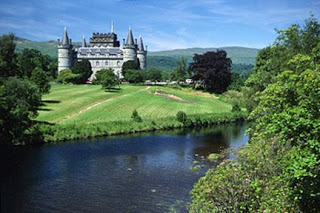
Family Pile: Inveraray Castle, Argyllshire.
History: The dukedom brings with it the the hereditary posts of Master of HM's Household in Scotland and Keeper of the Great Seal of Scotland.
The family suffered serious scandal in the Sixties, when the divorce proceedings of the 11th duke unearthed a famous photograph of his soon-to-be former wife with a mysterious naked man. Also introduced to the court was a list of eighty-eight men the Duke believed had enjoyed his wife's favours; the list is said to include two government ministers and three royals. The judge commented that the Duchess had indulged in "disgusting sexual activities".
The present duke, when not working in the whisky trade, is captain of the Scottish elephant polo team.
Holdings: Family owns 60,000 acres of Scotland, valued at £12.5m in 2001.
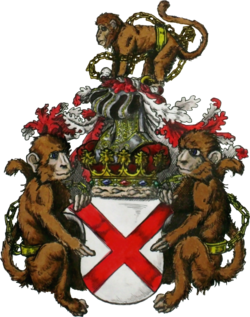
Maurice FitzGerald, 9th Duke of Leinster - title created 1766. Additional titles: Marquess of Kildare and Earl of Offaly. Family Pile: Formerly Carton House, Co. Kildare. Now a farmhouse in Oxfordshire.
History: The FitzGeralds assisted Edward I in his battles against the Scots. The family fortunes declined in the 20th century after the 7th Duke sold his interests in the family estates and was then declared bankrupt. His fourth wife, with whom he opened a teashop in Rye in 1965, was the caretaker of the block of flats in which he lived. Educated at Millfield, the present Duke is president of the Oxfordshire Dyslexia Association and is the highest ranking member of the Peerage of Ireland.
Holdings: None of note - the Duke works as a landscape gardener.
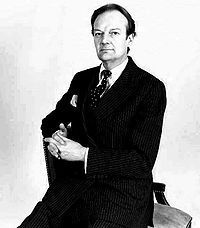
Murray Beauclerk, 14th Duke of St Albans Age: 70. Title created: 1684. Other titles include Earl of Burford, and Baron Heddington. Family Pile: Seat: A terrace house in Knightsbridge, London.
History: The first Duke was the illegitimate son of Charles II and Nell Gwyn. Though the present Duke is a Tonbridge-educated chartered accountant, an eccentric strain still runs through family. His heir, the Earl of Burford, has long campaigned to prove his ancestor, Edward de Vere, 17th Earl of Oxford, was the true author of the works of Shakespeare. In 1999, the young Earl was forcibly expelled from the House of Lords for jumping on the Woolsack and accusing the Government of treason in its expulsion of hereditary peers.
Holdings: Never a great landowning family, the Beauclerks were said to own 4,000 acres, worth £12m, in 2001.
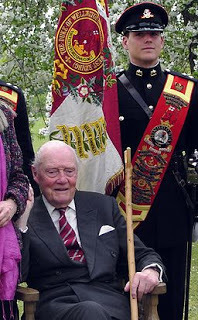
Arthur Wellesley, 8th Duke of Wellington Age - title created 1814. Additional titles: Prince of Waterloo, Duke of Vittoria and Earl of Mornington.
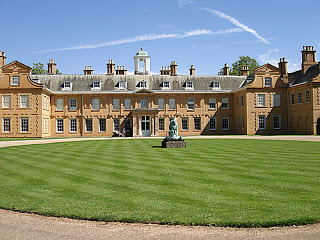
Family Pile: Stratfield Saye House, Hampshire
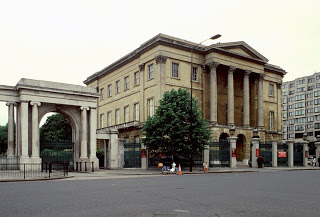
Second Family Pile: and Apsley House, London.
History: Like the original Iron Duke, the present Duke had a long Army career, winning the Military Cross and reaching the rank of Brigadier. In later life, he has devoted himself to his estates and charities, coming top in Country Life's 'Good Duke Guide' in 1991. The Duchess of Wellington died on November 1 of this year. His heir, the Marquess of Douro, is a former Tory MEP and his grandson. Arthur, Lord Mornington, is married to Jemma Kidd (Lady Mornington), the make-up artist, seen below.
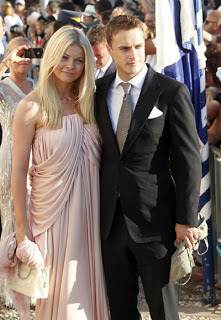
Holdings: 7,000-acre Hampshire estate, 20,000 acres of Belgium and Spain. Thought to be worth £50m in 2001. For all you want to know - and probably more - about the 1st Duke of Wellington, check the 40-something posts to be found under "Labels" in the left sidebar of this blog.
Published on December 10, 2010 01:22
December 9, 2010
A Gathering of Graces - Part Two
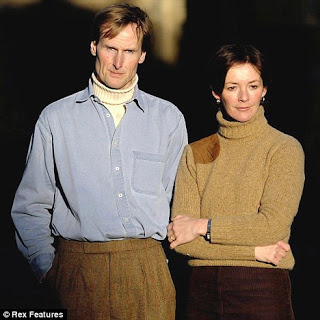
Ralph Percy, 12th Duke of Northumberland - title created 1766. Additional titles include: Earl Percy, Earl of Beverley, Baron Warkworth.
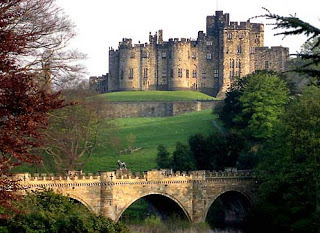
Family Pile: Alnwick Castle, Northumberland.
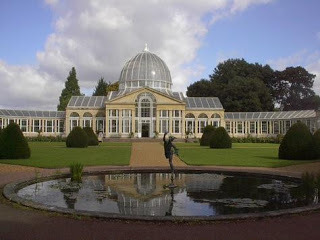
Family Pile #2 - Syon Park, London
History: Part of the original Norman Conquest set, the Percy family have been dominant in their part of the country for centuries. The family pile, Alnwick Castle, has been featured in Blackadder and stand in as the Hogwarts School in the Harry Potter films. The present Duke recently sold a Raphael painting to the nation for £22 million, a deal which attracted controversy because of the use of Lottery funds. But he's also been buying treasures, as well. Or, rather, returning treasures to their proper homes. On the telephone during a recent Sotheby's sale, the Duke of Northumberland dacquire a piece of ancestral porcelain - a Meissen plate painted with a seated wolf surrounded by flowers, which finally sold for £36,000 against a pre-sale estimate of £15,000-20,000. This follows on from his acquisition of another plate from the service in Part I of the sale last November. Both of the rare Meissen plates are from the 'Hanbury Williams/Duke of Northumberland' service dated 1748-1750 which had been a gift from Augustus III, King of Poland and Elector of Saxony to Sir Charles Hanbury Williams in 1748, and probably passed to the then Earl of Northumberland in 1756. Today, all but a few pieces from the service remain on display at Alnwick Castle, and now these two items will be reunited with them.
The newly-refurbished Alnwick Garden has become a major tourist attraction and in 2009 the Duchess was appointed the new Lord Lieutenant of Northumberland.
Holdings: With 132,000 acres, Syon Park in West London and a substantial art collection, he is valued at £300 million and ranked No. 178 on the latest Rich List.
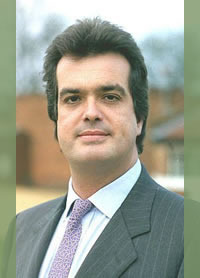
Andrew Russell, 15th Duke of Bedford - date of creation 1994. Additional titles: Marquess of Tavistock and Baron Howland.
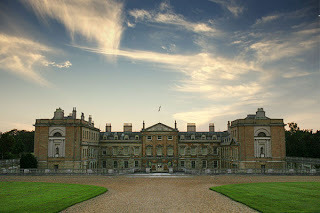
Family Pile: Woburn Abbey, Bedfordshire
History: The first Duke fought on both sides in the Civil War and was ennobled after the Glorious Revolution of 1688. In 1552, the duke received Covent Garden and seven acres of land in London. The 14th duke gave up most of his holdings in Bloomsbury to the University of London in 1953, but the present duke still has the power to raise the rents in Fizrovia and owns 23,000 acres of land and prime central London real estate. The family has made Woburn Abbey a major tourist attraction and the present duke is busy refurbishing much of the London estate.
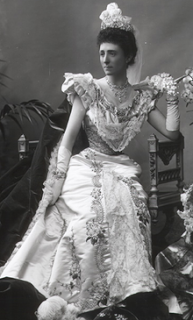
For a look at the fascinating life of Mary, Duchess of Bedford, above, click here.
Holdings: Valued at £489million. Owns 23,000 acres and prime central London real estate.
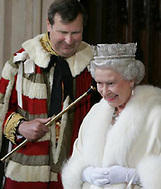
Edward Fizalan-Howard, 18th Duke of Norfolk - date of creation 1483. Additional titles: Earl of Surrey and Baron Maltravers.
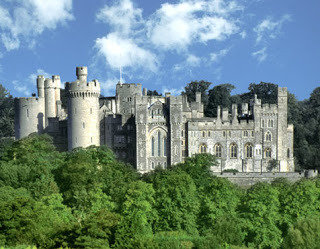
Family Pile: Arundel Castle, West Sussex.
History: As England's senior duke, Norfolk carries the hereditary title of Earl Marshal. As such, he plays an important role in running state occasions. The family's royal links stretch back centuries and theirs is the only Catholic dukedom. The present Duke's wife, Georgina, stands in for the Queen at rehearsals of the State Opening of Parliament. The new formal garden at Arundel was conceived ain 2008 as a light-hearted tribute to Thomas Howard, 14th Earl of Arundel (1585-1646), known as 'The Collector,' who died in exile in Padua during the English Civil War. Lord Arundel was the first of the great English art collectors, whose antique marbles are now at Oxford, and the library at the Royal Society; but the magnificent Van Dyck and Mytens portraits and some other objects commissioned or collected by him form the basis of the collection now at Arundel Castle, while his retrieval of lost family estates, titles and honours after the disasters of his ancestors' executions and attainders in the previous century were instrumental in the revival of the Norfolk family. The present Duke's eldest son and heir, Henry, the Earl of Arundel, 22, is a promising Formula Three driver. You can watch a 1937 Pathe film of the previous Duke and Duchess of Norfolk returning to Arundel after their honeymoon here.
Holdings: Half his 30,000 acres are in leafy West Sussex, while the family also owns a ten-acre parcel of London valued at £100 million in 2001.
Part Three Coming Soon!
Published on December 09, 2010 01:23
December 8, 2010
A Gathering of Graces - Part One
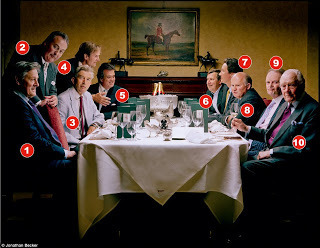 The Dukes: (from left to right) 1. James Graham, 8th Duke of Montrose; 2. David Manners, 11th Duke of Rutland; 3. John Seymour, 19th Duke of Somerset; 4. Ralph Percy, 12th Duke of Northumberland; 5. Andrew Russell, 15th Duke of Bedford; 6. Edward Fizalan-Howard, 18th Duke of Norfolk; 7. Torquhil Campbell, 18th Duke of Argyll; 8. Maurice FitzGerald, 9th Duke of Leinster; 9. Murray Beauclerk, 14th Duke of St Albans; 10. Arthur Wellesey, 8th Duke of Wellington.
The Dukes: (from left to right) 1. James Graham, 8th Duke of Montrose; 2. David Manners, 11th Duke of Rutland; 3. John Seymour, 19th Duke of Somerset; 4. Ralph Percy, 12th Duke of Northumberland; 5. Andrew Russell, 15th Duke of Bedford; 6. Edward Fizalan-Howard, 18th Duke of Norfolk; 7. Torquhil Campbell, 18th Duke of Argyll; 8. Maurice FitzGerald, 9th Duke of Leinster; 9. Murray Beauclerk, 14th Duke of St Albans; 10. Arthur Wellesey, 8th Duke of Wellington. In celebration of its 300th birthday last year, Tatler magazine rounded up some of the UK's twenty-four surviving Dukes to a lunch in St. James's, and ten accepted the invitation. Some of the remaining twenty-four Graces were either living abroad or too frail to make the journey. The group who attended was still the largest gathering of dukes since the Coronation of 1953 and until 1975 a quarter of the dukes were all related to each other, through either bloodlines or marriage. They are apparently still thick as thieves - the water served at the luncheon was bottled at the Duke of Marlborough's estate, Blenheim.
Here is an introduction to those ducal guests and a bit on their family history.
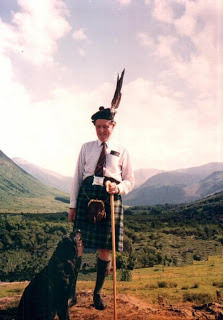
James Graham, 8th Duke of Montrose - date of creation 1707. Other titles include Viscount Dundaff and Lord Aberuthven, Mugdock and Fintrie. The current Duke is also Chief of the Graham clan.
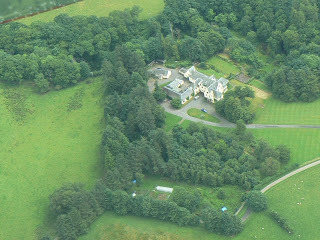
Family Pile: Auchmar, near Loch Lomond.
A look at an 1871 issue of The Academy is enough to sum up the family's historical importance. It reads in part - Mr. Frascr reports on the highly important muniments belonging to the Duke of Montrose. They include charters from King William the Lion, and subsequent Scottish sovereigns to successive representatives of the family of Graham. The papers relating to the first Marquis of Montrose embrace the correspondence with him of Charles I. and II., Queen Henrietta Maria, Elizabeth Queen of Bohemia, James Duke of York, Prince Rupert, Prince William of Orange, and others. The letters of Charles I., which are nearly all holograph, were written from various places during the Civil War, and show the great difficulties in which the king often found himself. The correspondence of his sister, Elizabeth of Bohemia, is marked by her characteristic wit and vivacity. The papers connected with the trial of Montrose and his companions, the depositions of witnesses concerning his invasion of Scotland, and the battle of Tippermuir in Perthshire; the petitions of the Ecclesiastical Courts for the execution of his imprisoned adherents; the acts and proceedings of the Privy Council and the Committee of Estates to enforce subscription to the Covenant, all throw strong light on the condition of Scotland in those stormy times. There is also an extensive correspondence of the first Duke of Montrose, who was greatly instrumental in accomplishing the Union between Scotland and England. In addition to the Montrose Papers proper, the present duke possesses the Lennox and the Menteith collections, which are scarcely of less historical importance.
Holdings - 8,800 acres valued at around £1 million in 2001.
.
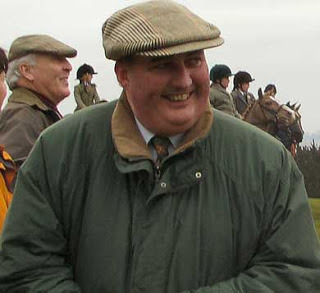
David Manners, 11th Duke of Rutland - date of creation 1703. Additional titles: Marquess of Granby and Baron Roos of Belvoir.
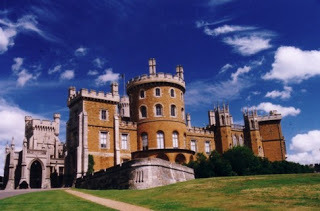
Family pile: Belvoir Castle, Leicestershire
History: While the main seat, Belvoir, is a magnificent 365-room pile with an underground railway and £100 million of art, the family also owns Haddon Hall in Derbyshire, widely recognised as one of Britain's finest medieval and Tudor manor houses. A previous Marquess of Granby (later the third duke) was a popular soldier and helped many of his men with their retirement, hence the number of pubs called the Marquess of Granby. The present castle is the third incarnation of the property. In 1799 the Fifth Duke of Rutland, then aged 21, married 20 year old Elizabeth Howard from Castle Howard in Yorkshire. She said that she would prefer to have a more traditional castle with towers, turrets and battlements, and so in the following thirty years the previous castle was rebuilt to the very fine Gothic Revival Castle that stands there today, complete with a great deal of fine Regency furniture, and a fabulous collection of fine art.
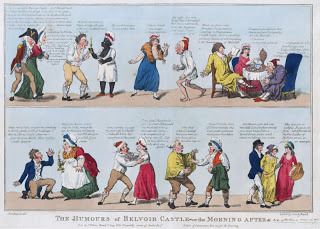
The Humours of Belvoir Castle -- or the Morning After", a March 1st 1799 English caricature depicting the debauchery that took place to celebrate the 5th Duke's 21st birthday appears above. Blackwood's Magazine ran the following piece which tells at that Beau Brumnmell attended - "At Belvoir he was (like one of the family) and at Chevelcy, another seat of the Duke of Rutland's, his rooms were as sacred as the Duke of York's, who was a frequent visitor there. On the Duke of Rutland's coming of age, in 1799, great rejoicings took place at Belvoir, and Brummell was one of the distinguished party there, among whom were the Prince of Wales, the late Duke of Argyll, the Marquis of Lorn, and the other chief fashionable people of the day." At another time, Brummell, who was then in the army, was more than an hour late for a military review. When at last he did arrive, he was dressed not in military dress, but rather in the colors of the Belvoir Hunt. He apologized profusely for any inconvenience caused and explained that he'd been thrown by his horse and had lain, senseless, on the ground for well above an hour. No one was fooled as to where the Beau had been - riding with the Duke of Rutland - but the general in charge of the review was somewhat mollified about this indiscretion when Brummell invited him to Belvoir Castle for dinner that evening. If you'd like to don your pinks and join the duke's Belvoir Hunt, click here.
Holdings: Ranked 474th in the latest Rich List, he is valued at £115 million. Estates across Leicestershire (12,000 acres), Derbyshire (10,000 acres), Cambridgeshire (4,000 acres) and Lincolnshire (2,000 acres).
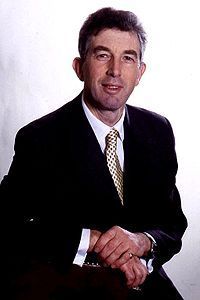
John Seymour, 19th Duke of Somerset - date of creation 1547. The family pile is located in Maiden Bradley, Somerset, but is being rented out at £50,000 a year. The Duke runs the estate from a smaller house in Devon.
History: He is a descendant of Jane Seymour, Henry VIII's third wife. The first Duke of Somerset, Edward Seymour, was Jane's brother. The family owns the fourposter oak bed in which Edward VI is said to have been conceived. To read about the life - and execution - of the first duke, click here.
Holdings: Around 5,000 acres of Somerset, including several villages.
Part Two Coming Soon!
Published on December 08, 2010 01:55
December 7, 2010
Leading Up to Jane Austen's Birthday...
Jane Austen's 235th Birthday Celebration at JASNA GCR
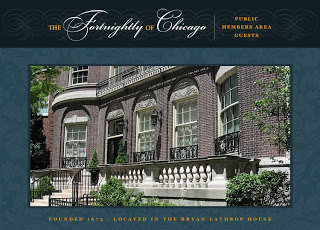 Victoria here. On Saturday, December 4, 2010, a packed house of Jane Austen aficionados met at Chicago's Fortnightly to celebrate her birth on December 16, 1775.
Victoria here. On Saturday, December 4, 2010, a packed house of Jane Austen aficionados met at Chicago's Fortnightly to celebrate her birth on December 16, 1775.
The Fortnightly, a woman's club founded in 1873, was decorated for the holidays in a splendid array of tasteful sparkle.
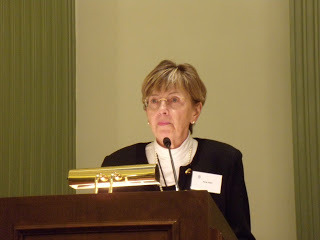 Jane HuntThe eager celebrants enjoyed a program begun by JASNA CGR Area coordinator Jeffrey Nigro of the Chicago Art Institute and Elisabeth Lenckos, of the University of Chicago. Jane Hunt, a member of the club and the JA society gave us a brief history of the organization, on E. Bellevue Place in the historic landmark Bryan Lathrop House in downtown Chicago.
Jane HuntThe eager celebrants enjoyed a program begun by JASNA CGR Area coordinator Jeffrey Nigro of the Chicago Art Institute and Elisabeth Lenckos, of the University of Chicago. Jane Hunt, a member of the club and the JA society gave us a brief history of the organization, on E. Bellevue Place in the historic landmark Bryan Lathrop House in downtown Chicago.
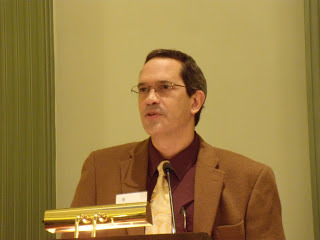
Cathy Feldman introduced the afternoon's speaker, Michaelangelo Allocca, also of the University of Chicago, who discussed: Are you Sure They Are All Horrid? Austen's Degrees of Disagreeability."
Mr. Allocca cited a number of uses of the word HORRID in Northanger Abbey, having at least three distinct definitions. When speaking of the gothic novels to which they were addicted, Catherine and Isabella use HORRID to mean wonderful, full of horror, awesome and meeting all their expectations. Later in the novel HORRID is used to mean bad in the sense of naughty or ungentlemanly behavior, and thirdly, to mean morally reprehensible and blameworthy.
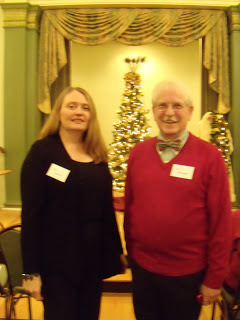 Karla Benton, William PhillipsMr. Allocca, later joined by questioners from the audience, then dissected various unsavory characters in Austen's Sense & Sensibility, Pride & Prejudice, and Northanger Abbey, defining to which version of HORRID each one belongs. It was a lively and entertaining talk.
Karla Benton, William PhillipsMr. Allocca, later joined by questioners from the audience, then dissected various unsavory characters in Austen's Sense & Sensibility, Pride & Prejudice, and Northanger Abbey, defining to which version of HORRID each one belongs. It was a lively and entertaining talk.
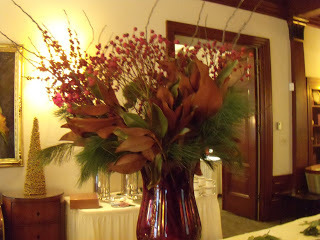 Little did we know what richness still awaited us, as we passed through the tea buffet with its delicious finger food – both savory and sweet. I was a particularly fan of the chicken salad with cranberries, something I doubt that Jane Austen ever tasted. And as for the chocolate dipped strawberries, not even Mrs. Elton could have surpassed the luscious fruits.
Little did we know what richness still awaited us, as we passed through the tea buffet with its delicious finger food – both savory and sweet. I was a particularly fan of the chicken salad with cranberries, something I doubt that Jane Austen ever tasted. And as for the chocolate dipped strawberries, not even Mrs. Elton could have surpassed the luscious fruits.
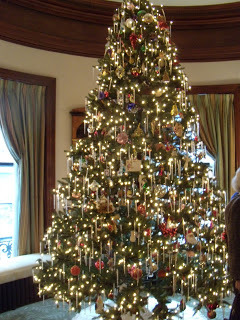 Now I await a second birthday celebration on December 11m at the North Hills Country Club when JASNA-WI has a luncheon in honor of our beloved author. Aren't I lucky to belong to TWO JASNA chapters????
Now I await a second birthday celebration on December 11m at the North Hills Country Club when JASNA-WI has a luncheon in honor of our beloved author. Aren't I lucky to belong to TWO JASNA chapters????
 Victoria here. On Saturday, December 4, 2010, a packed house of Jane Austen aficionados met at Chicago's Fortnightly to celebrate her birth on December 16, 1775.
Victoria here. On Saturday, December 4, 2010, a packed house of Jane Austen aficionados met at Chicago's Fortnightly to celebrate her birth on December 16, 1775.The Fortnightly, a woman's club founded in 1873, was decorated for the holidays in a splendid array of tasteful sparkle.
 Jane HuntThe eager celebrants enjoyed a program begun by JASNA CGR Area coordinator Jeffrey Nigro of the Chicago Art Institute and Elisabeth Lenckos, of the University of Chicago. Jane Hunt, a member of the club and the JA society gave us a brief history of the organization, on E. Bellevue Place in the historic landmark Bryan Lathrop House in downtown Chicago.
Jane HuntThe eager celebrants enjoyed a program begun by JASNA CGR Area coordinator Jeffrey Nigro of the Chicago Art Institute and Elisabeth Lenckos, of the University of Chicago. Jane Hunt, a member of the club and the JA society gave us a brief history of the organization, on E. Bellevue Place in the historic landmark Bryan Lathrop House in downtown Chicago.
Cathy Feldman introduced the afternoon's speaker, Michaelangelo Allocca, also of the University of Chicago, who discussed: Are you Sure They Are All Horrid? Austen's Degrees of Disagreeability."
Mr. Allocca cited a number of uses of the word HORRID in Northanger Abbey, having at least three distinct definitions. When speaking of the gothic novels to which they were addicted, Catherine and Isabella use HORRID to mean wonderful, full of horror, awesome and meeting all their expectations. Later in the novel HORRID is used to mean bad in the sense of naughty or ungentlemanly behavior, and thirdly, to mean morally reprehensible and blameworthy.
 Karla Benton, William PhillipsMr. Allocca, later joined by questioners from the audience, then dissected various unsavory characters in Austen's Sense & Sensibility, Pride & Prejudice, and Northanger Abbey, defining to which version of HORRID each one belongs. It was a lively and entertaining talk.
Karla Benton, William PhillipsMr. Allocca, later joined by questioners from the audience, then dissected various unsavory characters in Austen's Sense & Sensibility, Pride & Prejudice, and Northanger Abbey, defining to which version of HORRID each one belongs. It was a lively and entertaining talk.  Little did we know what richness still awaited us, as we passed through the tea buffet with its delicious finger food – both savory and sweet. I was a particularly fan of the chicken salad with cranberries, something I doubt that Jane Austen ever tasted. And as for the chocolate dipped strawberries, not even Mrs. Elton could have surpassed the luscious fruits.
Little did we know what richness still awaited us, as we passed through the tea buffet with its delicious finger food – both savory and sweet. I was a particularly fan of the chicken salad with cranberries, something I doubt that Jane Austen ever tasted. And as for the chocolate dipped strawberries, not even Mrs. Elton could have surpassed the luscious fruits. Now I await a second birthday celebration on December 11m at the North Hills Country Club when JASNA-WI has a luncheon in honor of our beloved author. Aren't I lucky to belong to TWO JASNA chapters????
Now I await a second birthday celebration on December 11m at the North Hills Country Club when JASNA-WI has a luncheon in honor of our beloved author. Aren't I lucky to belong to TWO JASNA chapters????
Published on December 07, 2010 02:00
Kristine Hughes's Blog
- Kristine Hughes's profile
- 6 followers
Kristine Hughes isn't a Goodreads Author
(yet),
but they
do have a blog,
so here are some recent posts imported from
their feed.



